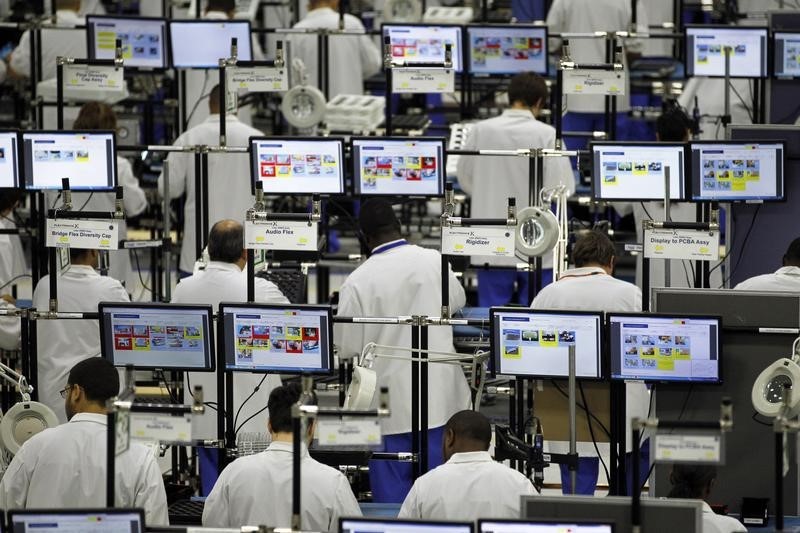Investing.com – Business activity in the U.S. private sector slipped in September, but remained close to a seven-month peak, according to preliminary data released on Wednesday.
In a report, market research group IHS Markit said that its composite purchasing managers’ index (PMI), covering both the manufacturing and services sectors, dropped to 54.6 in September, from the prior reading of 55.3.
On the indices, a reading above 50.0 indicates expansion, below indicates contraction.
The research group also said that its flash services purchasing managers’ index (PMI) fell to 55.1 in September, from the prior month’s reading of 56.0. That was a two-month low.
Analysts had expected the reading to slip only to 55.9.
Services make up approximately 80% of the U.S. economy which makes the data key for interpreting growth.
IHS Markit also said that its flash manufacturing purchasing managers’ index (PMI) inched up to 53.0 in September from the prior month’s final reading of 52.8.
That was a two-month high and in line with forecasts.
IHS Markit chief economist Chris Williamson said that the report revealed that the U.S. economy maintained “encouraging resilience in a month of hurricane disruption” and that the rate of expansion remained robust.
“Historical comparisons of the PMI with GDP indicate that the surveys point to the economy growing at an annualized rate of just over 2% in the third quarter,” he added.
Williamson noted that the biggest impact of Hurricane Harvey was evident in manufacturing supply chains, where resultant supply shortages were a key driver of higher prices.
“Supply delays were the most widespread in two and a half years, while input price inflation rose to the highest since 2012,” this economist pointed out.
"While repair work in the aftermath of Hurricane Harvey may boost short-term business activity in coming months, a drop in business optimism about the year ahead suggests that companies have become less confident in the longer-term outlook," Williamson concluded.
After the report, EUR/USD was trading at 1.1965 from around 1.1962 ahead of the release of the data, GBP/USD was at 1.3510 from 1.3544 earlier, while USD/JPY traded at 111.94 compared to 112.02 before the release.
The US dollar index, which tracks the greenback against a basket of six major rivals, traded at 91.83 compared to 91.84 before the report.
Meanwhile, U.S. stocks were trading lower after the open. The Dow 30 dipped 8 points or 0.04%, the S&P 500 lost 2 points, or 0.07%, while the tech-heavy Nasdaq Composite gave up 3 points or 0.05%.
Elsewhere, in the commodities market, gold futures traded at $1,299.54 a troy ounce, compared to $1,298.97 ahead of the data, while U.S. crude oil changed hands at $50.55, compared to $50.44 earlier.
